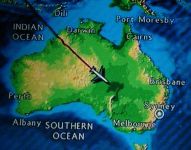Northern Territory, Tasmania slam Telstra's prices

update The Northern Territory government has bitterly complained about a lack of competition in the telecommunications market that it claims has led to it paying Telstra three to five times more for some communications services than the rest of the nation.

As Australian states provide submissions to the federal government commenting on how best to serve remote communities with the planned AU$4.7 billion national broadband network, the Northern Territory's government said it was experiencing problems related to interstate backhaul — in other words, the price of moving data between metropolitan areas.
The territory wants AU$70 million to provide a non-Telstra-owned backhaul cable into the territory, as well as AU$200 million to provide access to 40,000 people in 113 remote communities, who are unlikely to receive services under the planned NBN rollout.
"The effect of the lack of wholesale competition and the subsequent cost of backhaul to deliver ADSL2+ will ultimately leave Telstra as the only provider able to deliver terrestrial-based broadband at speeds greater than 8Mbps in the Northern Territory," wrote territorial officials.
"Extrapolation of this into the future would leave the Northern Territory with no competitive options for the development of fibre-to-the-node or fibre-to-the-home," the officials added.
Backhaul competition has been an issue which Tasmania has also been vocal about in the past, and the island state has mentioned it again in its submission to the government.
"The near-monopoly position Telstra holds in respect of wholesale broadband services in the state has led to commercial disincentives that many retail service providers find hard to overcome when considering establishing within the Tasmanian market," wrote the Tasmanian government in its submission.
A Telstra spokesperson said the focus should be on getting backhaul to the last two per cent, not duplicating it. "What's the point of duplicating service when you have areas of Australia missing out?" he said.
Government should, however, be investing in backhaul for the last two per cent, the spokesperson said. "Backhaul is vital for the communities and Telstra has always said that the government, in these areas of no return, should be helping provide backhaul."
The green state also expressed concerns that the 98 per cent of Australia's population to be covered by the NBN would not be divided fairly, with Tasmania being given the short straw, as even the cancelled OPEL project ignored population centres on Tasmania's east and west coast as well as the Bass Strait islands.
"The Tasmanian government remains concerned that these same areas are likely to be left out of any national submission to the NBN RFP process in favour of making up the 98 per cent coverage quota from areas on the mainland," the submission said.
Tasmania wants the NBN to reach 98 per cent of Australia's population not only at the national level, but also at the state and all the way down to the township level.
In its submission, Queensland said it didn't want the NBN coverage to be allocated purely on a population density basis (which would result in a strip of coverage on the coast), but instead to all towns, every school, library and tertiary education campus, all health facilities as well as to services such as police, ambulance, SES and Fire services.
Those areas outside the NBN being serviced by terrestrial networks should achieve 75 per cent of NBN speeds, while satellite speeds should reach a minimum of 25 per cent NBN speeds, Queensland officials said.
For remote areas, the state believed single homesteads should be connected via satellite, while towns should have access to a fibre-optic network within the town and 3G or wireless outside town boundaries, with a satellite backbone to connect to other regions.
In its submission, the South Australian government proposed changes to the Australian Broadband Guarantee payments, which incentivise carriers to provide services to regional areas.
The state didn't think the Australian Broadband Guarantee format — being a per-subscription subsidy — was the right carrot to get carriers involved. "Providers must commit funds, with no certainty that funds for subsidies will be available after they construct the network infrastructure or even connect the services," the submission said.
Wireless was named as the most effective way to reach SA regional communities. The state attacked the issue of spectrum in its submission, saying there needed to be a "use it or lose it rule" to prevent carriers buying up spectrum and then not converting it into broadband services.